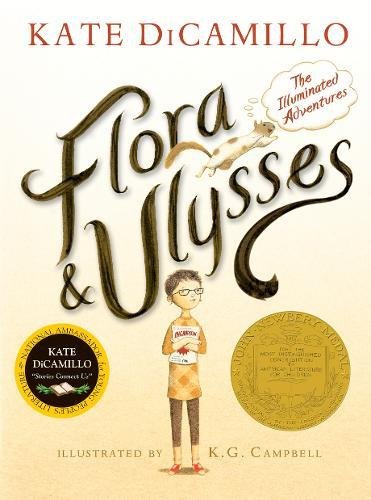Flora & Ulysses Book Summary
The Illuminated Adventures
TL;DR
Flora & Ulysses: The Illuminated Adventures follows Flora Belle Buckman, a cynical girl who saves a squirrel named Ulysses, who gains superpowers after a freak accident, leading to adventures that teach them both about hope and love.
What is Flora & Ulysses about
Written by Kate DiCamillo and illustrated by K.G. Campbell, Flora & Ulysses blends traditional narrative with comic-style graphics. The story centers on Flora Belle Buckman, a self-proclaimed cynic and comic book aficionado, who rescues Ulysses, a squirrel transformed by a vacuum cleaner accident. The novel explores themes of hope, friendship, and emotional growth as Flora learns to open her heart, encouraged by Ulysses' newfound abilities, which include strength, flight, and an affinity for misspelled poetry. The innovative format combines prose with engaging illustrations, making the book accessible and enjoyable for young readers aged 9-12.
Flora & Ulysses 5 Key Takeaways
Flora's cynicism and the vacuum accident.
Flora Belle Buckman believes in the power of comic books while being deeply cynical about life. When Ulysses, a squirrel, is accidentally sucked into a vacuum cleaner, Flora rescues him, setting off a series of extraordinary events.
Ulysses gains superpowers.
After his near-death experience, Ulysses emerges with unique abilities—strength, flight, and a talent for poetry. These powers lead Flora on a journey that redefines her understanding of friendship and hope.
Flora's transformation.
As Flora bonds with Ulysses, she begins to shed her cynical view of the world, realizing that vulnerability and connection can lead to personal growth and understanding.
Encountering challenges.
Flora and Ulysses face various challenges, including Flora's parents' struggles and the antagonism of their neighbor, which tests their resolve and friendship.
The theme of hope and family.
Ultimately, the novel emphasizes the importance of hope in overcoming life's challenges and highlights the significance of family and friendship during difficult times.
Flora & Ulysses Videos
Flora and Ulysses - YouTube
Top Flora & Ulysses Quotes
- "The world is full of things that can happen to you. But what matters is how you respond to them."
- "You are not alone. You have a friend who believes in you, even when you don’t believe in yourself."
Who should read Flora & Ulysses?
Flora & Ulysses is ideal for children aged 9-12, particularly those who enjoy humorous stories with strong themes of friendship and resilience. Parents and educators can use it to encourage discussions about hope, connection, and the importance of looking beyond cynicism to forge meaningful relationships.
Flora & Ulysses Best Reviews
- "A delightful mix of humor and heart, Flora & Ulysses captivates young readers with its unique structure and meaningful messages." – BookPage
- "DiCamillo's storytelling shines through in this inventive tale that seamlessly merges prose with comic art, engaging readers at every age." – Publishers Weekly
People also liked these summaries
Flora & Ulysses FAQs
What age group is Flora & Ulysses suitable for?
Flora & Ulysses is primarily aimed at children aged 9-12, making it an excellent choice for middle-grade readers.
What are the main themes in Flora & Ulysses?
The main themes include hope, the significance of family and friendship, and the journey of emotional growth from cynicism to openness.
